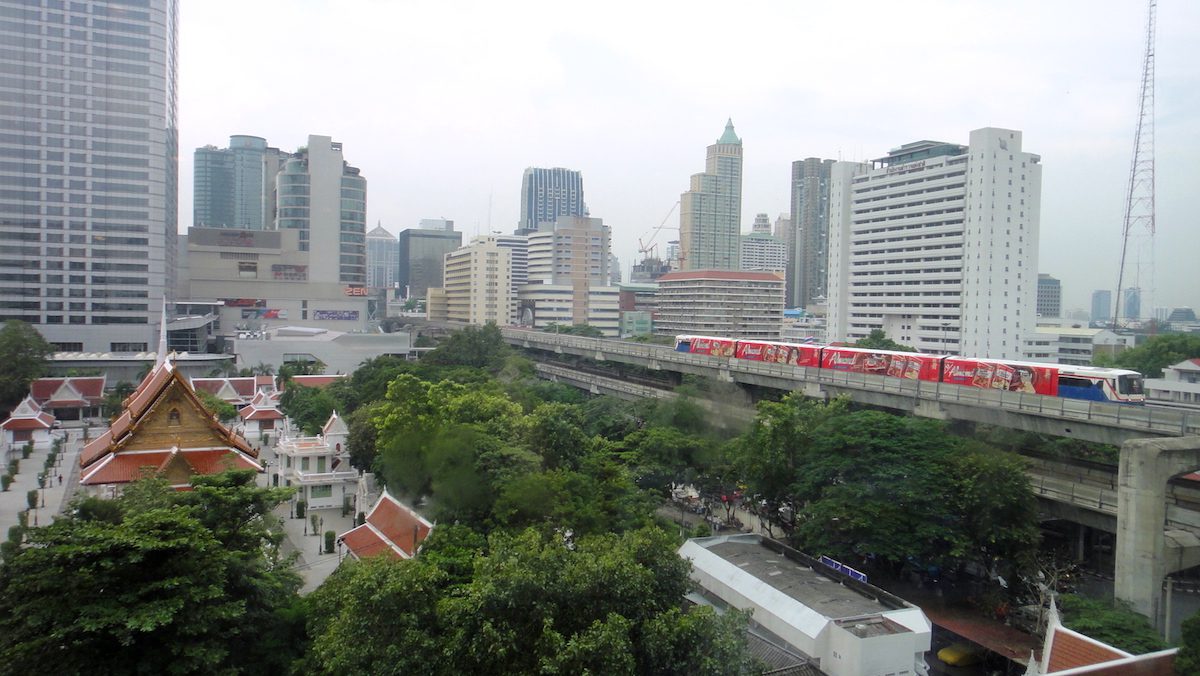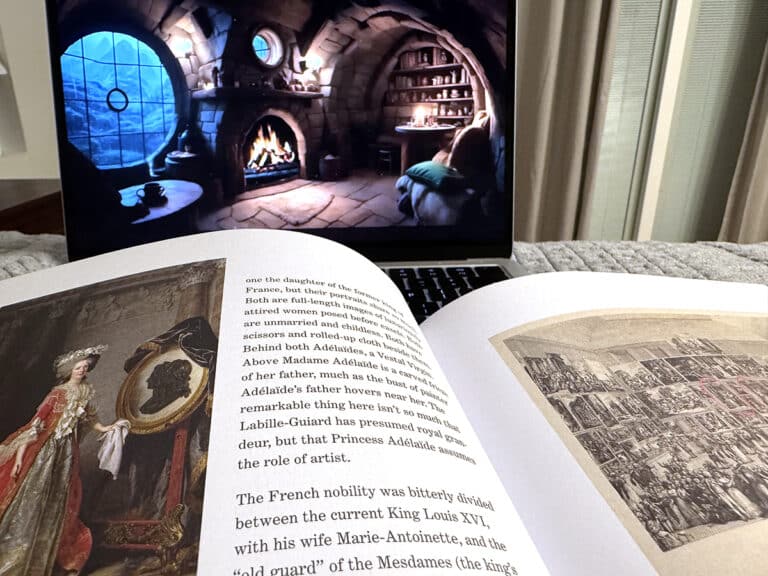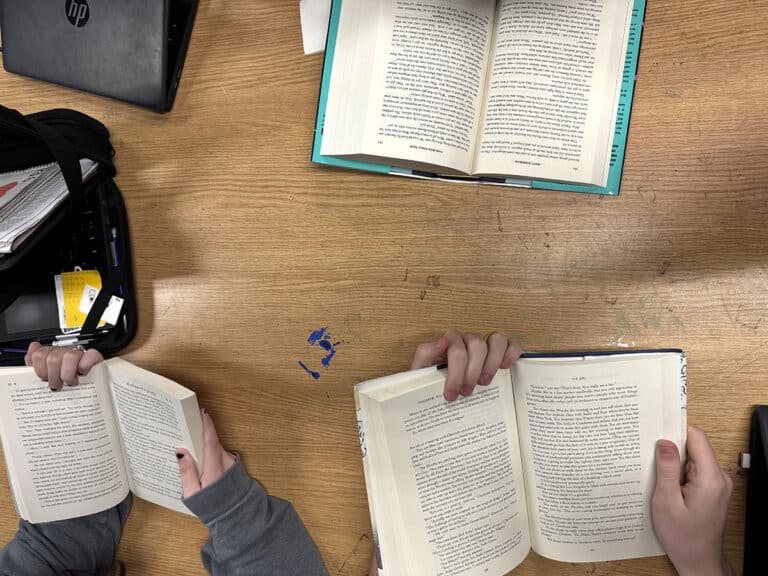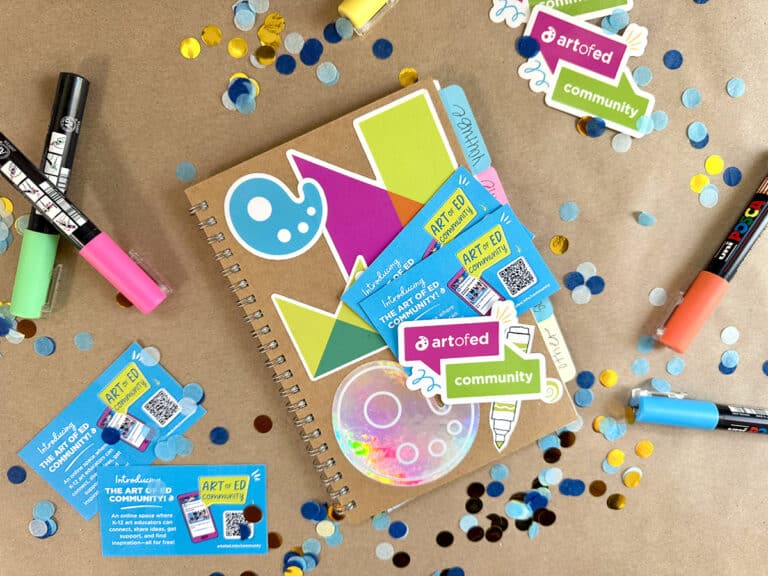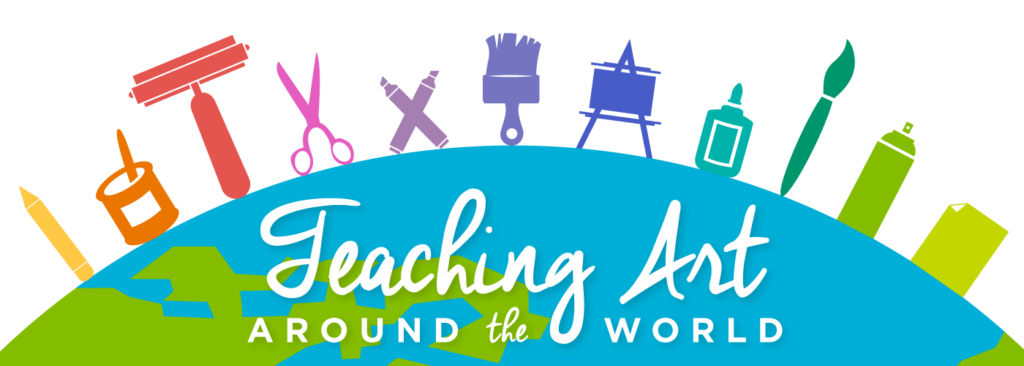
Welcome to the second installment of the Teaching Art Around the World series! If you missed the first one about living and teaching in Norway, you can check that out here. Today we’re talking with Lemuel Iglesias, an art teacher living and working in Bangkok, Thailand.
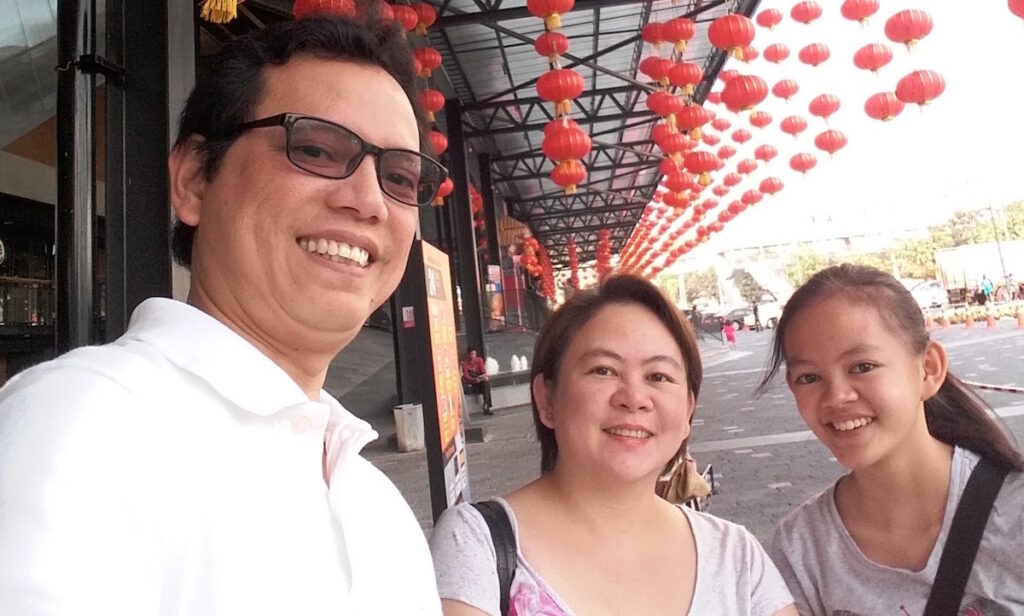
Lem’s Background
Originally from Manila, Philippines, Lem spent 8 years teaching there and 7 years teaching in Indonesia before taking his current position. Lem lives in Bangkok with his lovely wife of 22 years and their teenaged daughter.
Read on to learn about the school tradition that nearly brought him to tears, how even moving across the world can’t get you out of recess duty, and why Thai taxi drivers will restore your faith in humanity.
On Teaching in Thailand
Lem’s School
I teach at Singapore International School of Bangkok in Bangkok, Thailand. Many of our teachers are from Europe, North America, and Asia, although we have staff members from all over the world. Our school focuses on a holistic brand of education based on Singapore and UK curricula. The school serves over 1,000 students of over 20 nationalities ages 2 through 18.
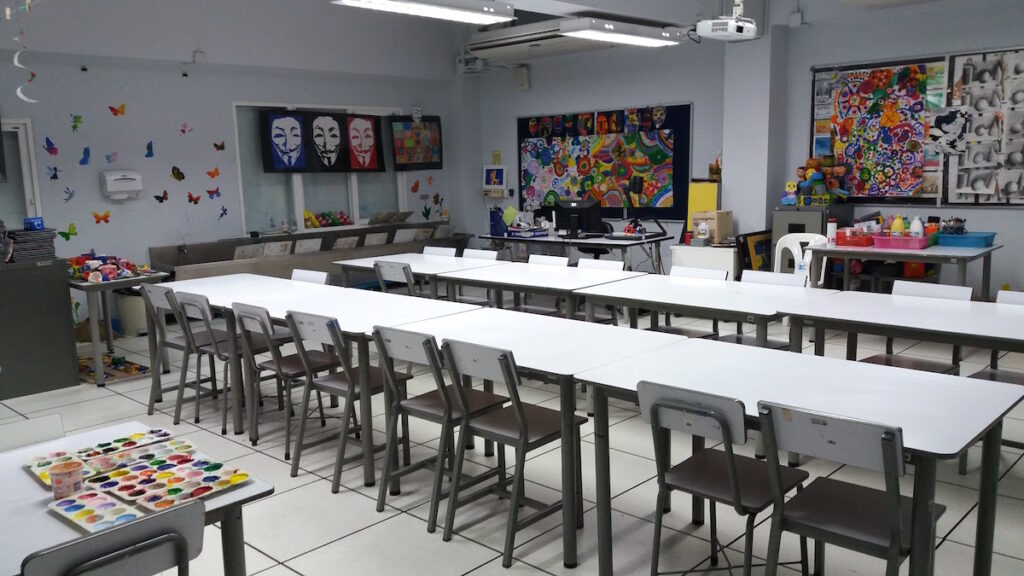
Lem’s Teaching Position
My current job title is “Teacher-In-Charge” of the Primary Art Department. This means I handle some administrative matters and teach at the same time. I work with students that are 9-12 years old. I see each of my 13 classes once per week for 80 minutes.
Structuring a Long Class Period
Eighty minutes might seem like a long time, but breaking it down into smaller parts helps.
We start with a reminder of the “art rules” and a recap of the last class. An introduction of the lesson for the day follows using a Powerpoint, then a hands-on demo of the art procedure. In the next hour, I let them work quietly as I table-hop around the classroom observing, checking, motivating, and helping them out if needed.
10 minutes before the class ends, each student is responsible for cleaning up their work area and returning all art materials in their proper places. I do a quick recap of the day’s activity and lesson, then I bring them back to their homeroom.
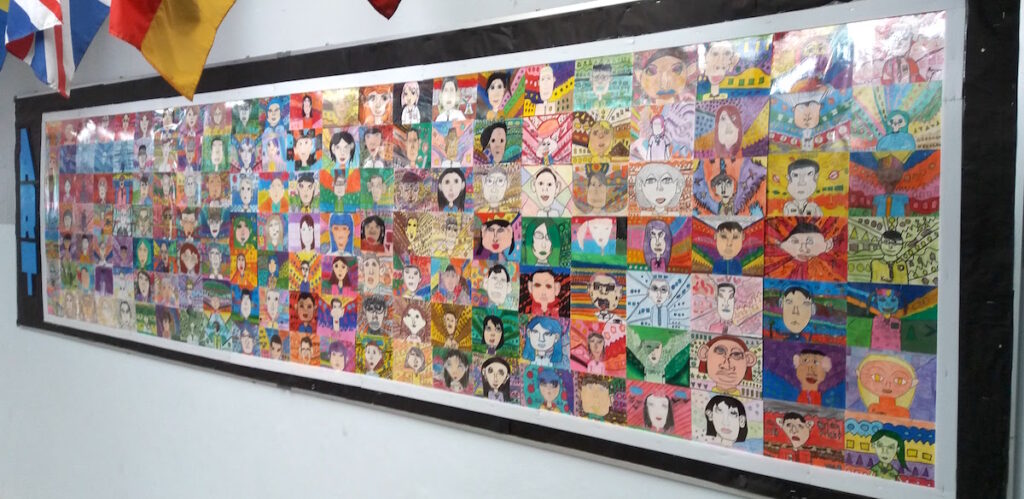
Classroom Management
I take classroom management and discipline seriously in my art room. I have eight rules, which the whole class pledges to follow at the beginning of every meeting. In addition, I have a disciplinary procedure, which I consistently announce after the pledge. The third offense involves an appointment with the school principal– but this has never happened. So, I think it has been working well, so far.
That said, during the first day of implementing these rules to one of my classes consisting of eight-year-olds, I saw a couple of my young students bunny-hopping around the room. I asked them, “What are you doing?” They answered, “The rule said ‘Do not walk around,’ so we’ll hop.” I scratched my head smiling. They are sometimes too smart for me.
Art Teacher Duties
Specialist Teachers like myself have specific areas of the playground to monitor during recess and lunch break. We also have lunch duty and are expected to encourage children to eat properly while engaging in light-hearted conversation with them. Of course, there’s the regular staff and department meetings, plus special committee meetings for school events.
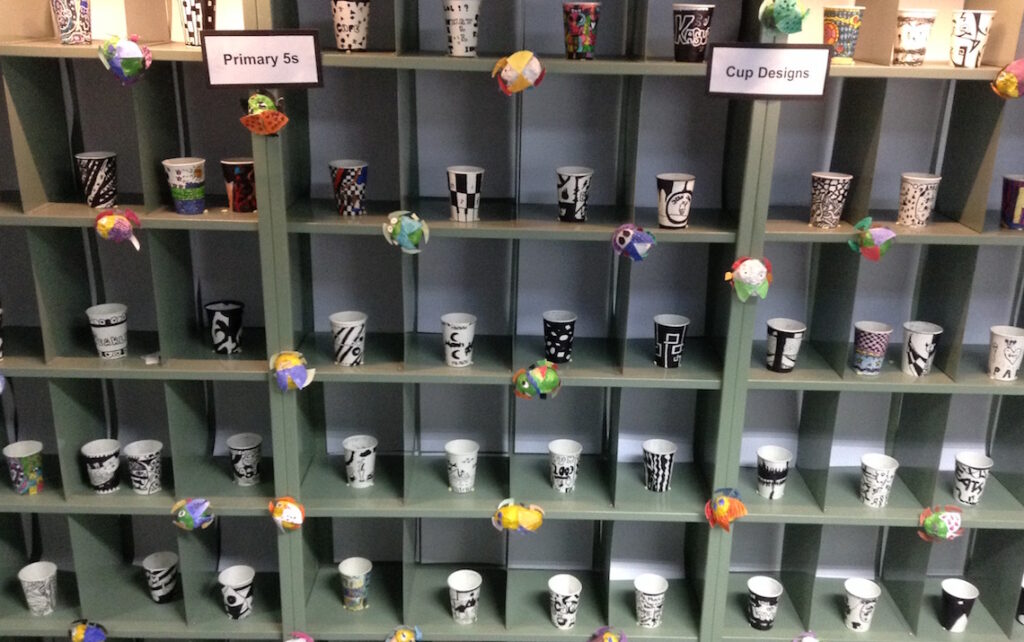
Language Learning
Students at our school are required to attend three language classes as part of the curriculum: Thai, Chinese, and English. Outside of these language classes, students are taught in English and speak English most of the time at school.
Respect for Teachers
Teaching is a highly respected profession here, and schools all over the country celebrate teachers during the “Wai Khru” ceremony. During this ceremony, students kneel and bow to teachers to show respect and pay homage. The first time I experienced this, I had goosebumps and I almost cried. I realized I was doing something great for society as a teacher.
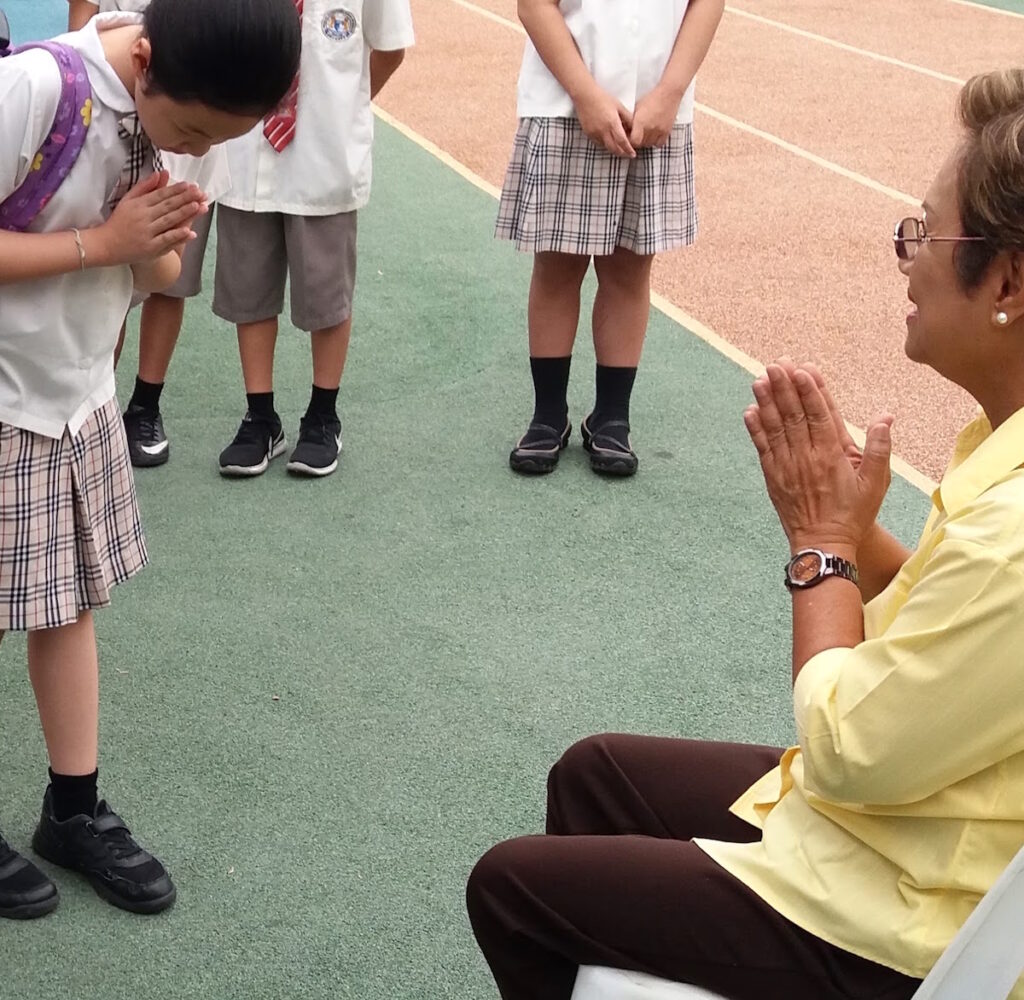
School Lunch
I love having lunch in my school. There’s a standard menu published on the school website so parents, teachers, and students are informed about what is being served on a particular day of the week. I love that there’s always milk or soya drinks, soup, Asian and Western dishes, vegetables, fruits, and a salad bar. Our chef and nutritionist do a great job in keeping the snack and lunch menu healthy for the students since it’s one of the top priorities of the school.
On Living in Thailand
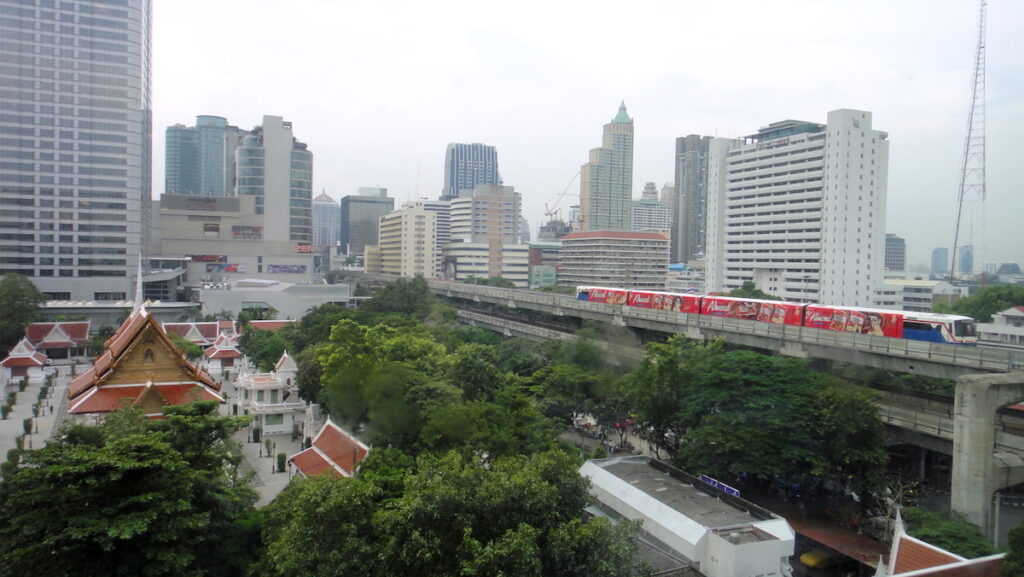
Working Through the Language Barrier
As an expatriate teacher, my main challenge is communicating in the local language. Although the students and school staff are all fluent in English, it is very difficult when it comes to coordinating with people from outside the school. I’m always surprised (although I think I shouldn’t be) that most people do not communicate in English.
If I need help, our local staff is wonderful. All expatriate teachers work closely with them and they do an outstanding job in helping us in communicating and coordinating with parents and others.
Having said that, there are still moments I am left on my own. In those times, I sometimes ask a student to help or use a lot of miming and gestures. The language barrier is only a concern for new teachers in Thailand, like me. A lot of expatriate teachers I work with speak Thai fluently.
Trying to Decode the Unique Number System
As with most countries with an ancient past, Thailand proudly has its own way of saying and writing numbers. During our first months here, whenever we went to the local market, we were always perplexed. We’d always nod politely, but we didn’t understand the symbols and words at all. So, my wife thought of always having 100 bills of the local currency on hand.
Now, after being told the price, we smile with confidence and hand over a 100 baht bill, so no matter what price the vendor says, it often covers it. They’re so honest we’ve never been overcharged.

Thai Artistry and Tradition
My favorite part of teaching in Thailand is being surrounded by the artistry and tradition of the Thai culture, which is truly inspiring. The whole city of Bangkok is filled with traditional Thai decorations side-by-side with contemporary art ideas. They have awesome beaches and nature reserves, museums, galleries, and ancient temples that are all very accessible. The thriving city inspires you to bring all these ideas and inspirations into your classroom for students to explore and appreciate as well.
Helpful Taxi Drivers
My daughter once left a thick file folder of her worksheets in a taxi cab on our way to school in the morning. By lunchtime, we had it back. The driver noticed the documents in the backseat when he was kilometers away from the school. But, he remembered us and drove back to return it. He gave it to the school receptionist to hand it over to us after explaining what happened. Cliché but true, these simple acts of random kindness restore one’s faith in humanity.
Food as Art
Thai food is art for me since there is always a variety of greens and yellows and reds. There’s a particular aroma with every dish that makes you want to taste it. Once you do, every bite is a moment of eternal bliss… that’s the best way I can explain it. Try the Stir Fried Yellow Crab Curry. You won’t be disappointed.

The Land of Smiles
They say this is the Land of Smiles, and it’s true. People here are incredibly friendly, accommodating, helpful, and respectful. If you visit, you won’t want to leave. In our first week here, we got lost in the city and asked for directions from one of the locals. She tried her best to speak English to explain to us how to get there. We thanked her and left following her directions. After about 10 blocks of walking, we heard a voice calling from behind. It was the same girl running toward us, sweating. Catching her breath, she said, “I’m so sorry I gave you the wrong direction; you should go the opposite way.” We were so humbled by this act of kindness.
Relaxing Weekends and Holidays
On weekends when I’m totally free from work, we usually go window shopping in the nearby malls, eat out in a restaurant, browse for art supplies and stationery, or watch a movie. On holidays, we visit tourist sites like the Wat Pho Temple, where you can see one of the largest reclining Golden Buddha statues in Southeast Asia (46 meters in length) or shop at the Asiatique, the riverfront night bazaar where you can buy items at bargain prices. It’s a shopping adventure since you get a free boat ride getting there. Don’t forget to politely ask for a discount or haggle a bit for every item you want to buy in any of these places. It’s expected and it’s all part of the fun and learning.
On Teaching Abroad
Saint Augustine once said, “The world is a book, and those who do not travel only read one page.” When I was younger, I always thought that it would be a pity to not see other parts of this great big world before getting old. The teaching profession gives you that perfect opportunity to see the world. Don’t let teaching in your native country be the only page in your book of life. Add more pages to it: Teach and travel, travel and teach, and realize that this might be your true purpose in life.
Thank you so much, Lem!
Have you been to Thailand before? What was your experience like?
Does anything about Lem’s experience teaching there surprise you?
Magazine articles and podcasts are opinions of professional education contributors and do not necessarily represent the position of the Art of Education University (AOEU) or its academic offerings. Contributors use terms in the way they are most often talked about in the scope of their educational experiences.

